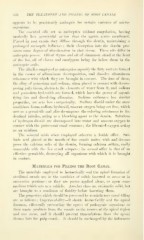Page 438 - My FlipBook
P. 438
436 THE TREATMENT AND FILLING OF ROOT CANALS.
appears to be persistently antiseptic for certain varieties of micro-
organisms.
The essential oils act as antiseptics without coagulation, having
markedly less germicidal action than the agents above mentioned.
Placed in root canals they diffuse througli the dentin, maintaining a
prolonged antiseptic influence ; their absorption into the dentin pro-
duces some degree of discoloration in that tissue. These oils differ in
antiseptic power. Oil of thyme and oil of cinnamon stand at tlu; head
of the list, oil of cloves and eucalyptus being far below them in the
antiseptic scale.
The alkalies employed as antiseptics saponify the fatty matters formed
in the course of albuminous decomposition, and dissolve albuminous
substances with which they are brought in contact. The first of these,
the alloy of potassium and sodium, when placed in contact with decom-
posing pulp tissue, abstracts the elements of water from it, and sodium
and potassium hydroxids are formed, which have the power of saponi-
fying fats and dissolving all^umins. Sodium carbonate has similar
properties, but acts less energetically. Sodium dioxid under the same
conditions forms sodium hydroxid, nascent oxygen being set free, which
acts as a germicide and also decomposes the coloring substances in the
dentinal tubules, acting as a bleaching agent to the dentin. Solutions
of hydrogen dioxid are decomposed into water and nascent oxygen in
contact with the putrescent canal contents ; the liberated oxygen acting
as an oxidizer.
Tiie mineral acids when employed subserve a double office. Sul-
furic acid placed at the mouth of fine canals unites with and decom-
poses the calcium salts of the dentin, forming calcium sulfate, easily
removable with the fine canal scrapers ; its second office is that of an
effective germicide, destroying all organisms with which it is brought
in contact.
Materials for Filling the Root Canal.
The materials employed to hermetically seal the apical foramina of
sterilized canals are in the condition of solids inserted en masse or in
successive portions ; or they are pastes applied alone, or upon some
medium which acts as a vehicle. Another class are ordinarily solid, but
are brought to a condition of fluidity before inserting them.
The properties which should be possessed by a satisfactory canal filling
are as follows : Impermeability— it should hermetically seal the apical
foramen, effectually preventing the egress of pathogenic organisms or
their waste products from the canals to the tissues of the apical region
and vice versa, and it should prevent transudations from the apical
tissues into the pulp canals. It should be unchanged by the influences


